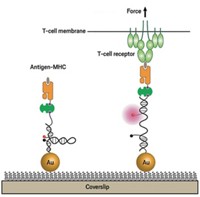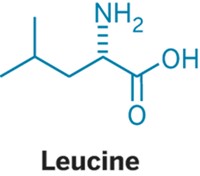Advertisement
Grab your lab coat. Let's get started
Welcome!
Welcome!
Create an account below to get 6 C&EN articles per month, receive newsletters and more - all free.
It seems this is your first time logging in online. Please enter the following information to continue.
As an ACS member you automatically get access to this site. All we need is few more details to create your reading experience.
Not you? Sign in with a different account.
Not you? Sign in with a different account.
ERROR 1
ERROR 1
ERROR 2
ERROR 2
ERROR 2
ERROR 2
ERROR 2
Password and Confirm password must match.
If you have an ACS member number, please enter it here so we can link this account to your membership. (optional)
ERROR 2
ACS values your privacy. By submitting your information, you are gaining access to C&EN and subscribing to our weekly newsletter. We use the information you provide to make your reading experience better, and we will never sell your data to third party members.
Biological Chemistry
Controlling Cell Signaling
Tissue Engineering: Preorganization allows signal-induced changes to occurfaster
by Stu Borman
July 11, 2011
| A version of this story appeared in
Volume 89, Issue 28

A signaling molecule will readily send its message when it encounters a preorganizedarray of receptors on a cell’s surface, a new study shows (Proc. Natl.Acad. Sci. USA, DOI: 10.1073/pnas.1101454108).
The work is the first time preorganized surfaces have been used to spatially controlcell signaling, according to the researchers—grad student Lingyin Li, chemistryand biochemistry professor Laura L.Kiessling, and coworkers at the University of Wisconsin, Madison. Potentialapplications include creating biological tissues with patterned functionality by causingcells to differentiate into other cell types in specific locations.
Kiessling and coworkers were inspired by the late chemist Donald J. Cram’s conceptof “preorganization,” the idea that host-guest interactions are mostfavorable when host and guest have complementary shapes. They set out to apply theconcept to TGF-β, a signaling molecule that plays key roles in development, woundhealing, cell differentiation, cancer, inflammation, and other biological processes.
For signaling to occur, TGF-β must land on a cell surface and gather together andbind TβRI and TβRII, receptor dimers required for its activation. Kiesslingand coworkers speculated that using peptide ligands to preorganize both receptor dimersin the correct pattern on cell surfaces would facilitate TGF-β-induced signaling.
The strategy worked. When they coat the peptide ligands on slides, epithelial cells bindto the slides, and the ligands preorganize cell-surface TβRI and TβRII. Whenthey then add TGF-β, it binds the receptors, generating signals that cause nearlyall the epithelial cells to differentiate to mesenchymal cells within 48 hours. Incontrast, far less differentiation occurs on nonpreorganized cell surfaces.Preorganization-induced signaling causes the same changes in gene expression as thosecaused by unaided signaling.
The peptide ligands do not compete with TGF-β for binding sites on the receptordimers; they simply arrange the receptor dimers to be ready for TGF-β, as a chefmight collect all the ingredients for a recipe in advance. The researchers believe thepreorganization approach will also prove applicable to rapidly activating other types ofcell-signaling molecules.
“Kiessling and coworkers have achieved a synthetic tour de force here,”comments biophysicist Dennis E.Discher of the University of Pennsylvania, whose areas of specializationinclude cell adhesion and differentiation. “They have made novel peptides that areintelligently immobilized in clusters to activate a major growth-factor pathway. Inshowing that thousands of genes are activated by their peptide-coated surfaces in amanner similar to the naturally soluble TGF-β, one can imagine all sorts of newapplications such as smart bandages that help close wounds.”




Join the conversation
Contact the reporter
Submit a Letter to the Editor for publication
Engage with us on Twitter